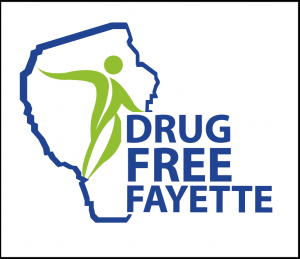Tomorrow is a national awareness day for something you have probably never heard of. A local mom, and PANDAS Network.org, hope to change that.
National PANDAS / PANS Awareness Day is Thursday, Oct. 9. The purpose is to raise awareness of these frightening illnesses that cause sudden and acute behavior changes in children following a bout of strep or other infectious trigger. Heather Ward and her husband, Scott, have become near experts on the subject since two of their three children have been diagnosed with one of these syndromes.
“Most people haven’t heard of it, nor have many doctors,” Ward, art director for Fayette Woman, said. “And if they have they are reluctant to diagnose or treat it because they don’t know enough about it or because they have never seen it first-hand. It’s complicated, really complicated, and hard to comprehend, diagnose and treat. And it’s a living nightmare for the child affected by it and for the entire family.”
First identified in 1998, PANDAS stands for Pediatric Autoimmune Neuropsychiatric Disorders Associated with Streptococcal Infections. PANDAS occurs when strep triggers a misdirected immune response which causes inflammation on a child’s brain, which then causes life changing symptoms such as OCD, anxiety, tics, personality changes, a decline in math and handwriting abilities, sensory sensitivities, restrictive eating and more.
The hallmark trait for PANDAS is sudden acute and debilitating onset of intense anxiety and mood changes occompanied by obsessive compulsive behavoir and / or Tics following a strep infection. The onset can occur four to six months after a strep infection because antibiotics did not fully eradicate the bacteria.
PANS (Pediatric Acute-onset Neuropsychiatric Syndrome) occurs when an infectious trigger, environmental factors and other possible triggers create a misdirected immune response which results in inflammation on a child’s brain. The child in turn may exhibit changes in personality and behavior similar to those of a PANDAS patient.
“For most parents and families the sudden onset of these symptoms is undeniable and can send a family reeling and frantically searching to figure out what has happened to their child,” Ward says.
And when they do get a diagnosis, they may, like the Wards, find that expensive treatment for the syndrome is not covered by insurance. A fundraiser in April helped fund the approximately $15,000 in costs associated with a special intravenous blood product treatment known as IVIG for their son.
The Wards also created a website about their journey, www.fightingpansandpandas.com, and a Facebook page, https://www.facebook.com/FamiliesforPansPandasAwareness.
PANDAS Network estimates conservatively that 1 in 200 children in the United States has this illness with 69% of cases beginning when a child is between 4 and 9 years old. Early treatment of this illness is the most effective way ot lessen the severity of symptoms. It is also important to prevent future strep infections as much as possible.
For more information about PANDAS or PANS, Ward recommends these websites:
PANDASnetwork.org
webpediatrics.com
intramural.nimh.nih.gov, www.ocdfoundation.org/pandas/
www.pandasresourcenetwork.org/
bethalisonmaloney.com/pandaspans/
Know the symptoms of PANDAS / PANS
PANDAS is when strep triggers a misdirected immne response resulting in inflammation fo a child’s brain. In turn, the child quickly (within six months usually) begins to exhibit life changing symptoms, as listed below. The hallmark trait for PANDAS is sudden and acute and debilitating onset of intense anxiety and mood changes accompanied by OCD-like issues and Tics. PANS is when an infectious or environmental trigger causes similar changes.
Symptoms and severity vary. This is a list of possible symptoms. Not all need to be present and not all possible symptoms are listed.
OCD (Obsessive / Compulsive Disorder)
Restrictive Eating
Tics
Anxiety
Inability to control emotional responses
Depression
Irritability
Aggression
Behavioral regression
Deterioration in school performance
Sensory sensitivities
Difficulty sleeping
Enuresis, frequent urination and bed wetting
Hyperactivity
Choreiform Movements
Severe separation anxiety
Hallucinations
Fight or flight response
Dilated pupils
— From www.pandasnetwork.org












Leave a Comment
You must be logged in to post a comment.